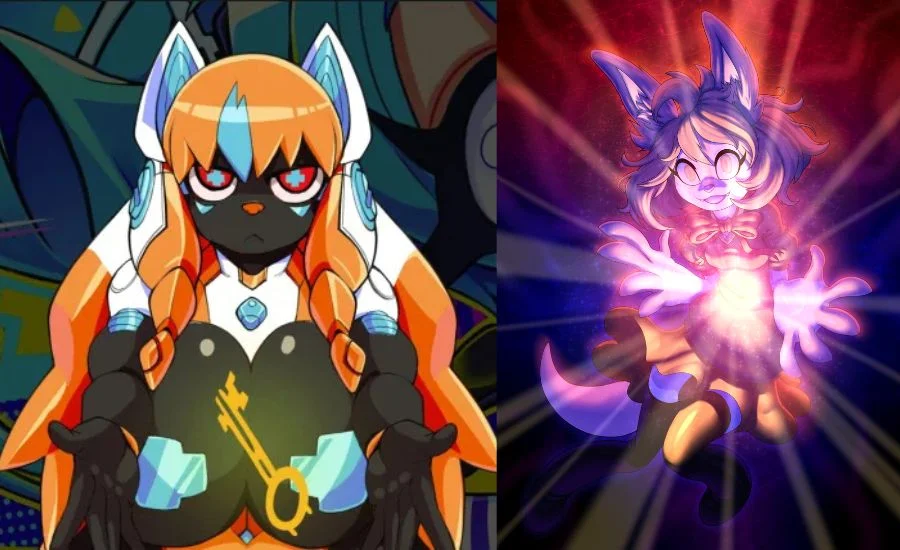Kemono Party: Unveiling the World of Online Fan Communities
As digital content creation continues to grow, platforms that allow creators to earn revenue from their work have become an integral part of the internet. Sites like Patreon, Fanbox, and Subscribestar enable creators to connect with their audience and generate income through exclusive content. However, a controversial counterpart to these platforms has emerged: Kemono Party.
What is Kemono Party?
Kemono Party is an online platform designed to share premium content that is usually behind paywalls. It allows users to access materials such as art, stories, videos, and music that were originally created for paying subscribers. The site hosts content from platforms like:
- Patreon
- Fanbox
- Subscribestar
- Gumroad
The platform’s design makes it easy for users to search and explore content without having to subscribe to the original creators. However, the anonymity of the platform complicates efforts to track contributors or verify the source of the shared materials.
How Does Kemono Party Function?
The operation of Kemono Party depends largely on contributions from its users. Those who have purchased subscriptions to content can download it and upload it to the site, where it becomes available for public viewing. The content is then organized into a central database, sorted by creator or theme.
Some key features include:
- Creator Pages: Users can find specific creators and access all content associated with them.
- Categories: Content is sorted by type, such as art, videos, or documents.
- User Interaction: Users can leave comments on shared content and make requests for updates from uploaders.
Why Do People Visit Kemono Party?
The main appeal of Kemono Party is its accessibility. For fans who can’t afford numerous subscriptions or want to explore the works of different creators, the platform offers a simple way to access exclusive material. The ability to browse anonymously without registering is another draw for some users.
The Ethical and Legal Dilemmas Surrounding Kemono Party
Although it has gained popularity, Kemono Party raises significant legal and ethical concerns. The unauthorized distribution of paywalled content leads to questions regarding creator rights and the responsibilities of platforms hosting this material.
- Copyright Violation
Content shared on Kemono Party is often uploaded without the creator’s permission, which infringes on copyright laws. This can result in financial losses for creators who rely on subscription revenue to fund their work.
- Impact on Creators
Creators spend considerable time and resources producing exclusive content, expecting fair compensation. Platforms like Kemono Party disrupt this revenue model, which can demotivate creators from offering paid content.
- Ethical Debate
While some argue that freely sharing content democratizes access, others believe it amounts to theft. The debate centers around balancing consumer access with the protection of creators’ intellectual property.
- Challenges in Enforcement
Kemono Party’s anonymous nature makes it difficult to take legal action against the site or its users. Even when creators request content removal, the material can be re-uploaded by anonymous contributors.
How Kemono Party Impacts the Creator Economy
The emergence of Kemono Party highlights a broader shift in the digital creator economy. As more creators turn to subscription-based income models, the tension between accessibility and exclusivity becomes more evident.
- Revenue Loss
Creators may lose income when potential subscribers turn to free platforms like Kemono Party instead of paying for content. This issue is particularly severe for small creators who depend on a niche audience.
- Erosion of Trust
Platforms like Patreon and Fanbox rely on the trust between creators and their supporters. When content is leaked, this trust is damaged, making it harder for creators to maintain genuine connections with their followers.
- Incentive for Innovation
On the other hand, the threat of piracy could push creators to offer more innovative content that can’t be easily shared, such as personalized experiences, live interactions, or exclusive merchandise.
Legitimate Alternatives to Kemono Party
For those wanting to support their favorite creators while gaining access to premium content in a legitimate way, several alternatives are available:
- Direct Subscriptions
Supporting creators on platforms like Patreon, Fanbox, or Subscribestar ensures they receive fair compensation for their work.
- One-Time Purchases
Creators often sell standalone products on platforms like Gumroad or Ko-fi.
- Free Samples
Some creators offer free previews or samples of their work, allowing potential subscribers to gauge the content before committing.
Direct support fosters stronger creator-fan relationships and contributes to a healthier digital ecosystem.
How Creators Can Safeguard Their Content
While platforms like Kemono Party pose challenges, creators can take steps to protect their work:
- Watermarkin
Adding visible watermarks to images or videos can deter unauthorized sharing.
- Building a Community
Cultivating a loyal fanbase can encourage respect for the exclusivity of paid content.
- Diversified Revenue
Creators can reduce their reliance on subscriptions by offering merchandise or hosting live events.
- Legal Measures
Monitoring content-sharing platforms and issuing takedown requests can help prevent unauthorized distribution.
What Lies Ahead for Platforms Like Kemono Party
Kemono Party represents just one aspect of the ongoing struggles in the digital creator economy. As technology continues to evolve, so too must strategies to protect intellectual property and ensure creators are fairly compensated.
- Balancing Access and Exclusivity
One possible solution could involve subscription platforms offering both free and premium content tiers, appealing to a wider audience while still maintaining exclusivity for paying subscribers.
- Technological Advancements
Emerging technologies, such as blockchain and digital rights management (DRM), could provide creators with better tools for securing their content and tracking unauthorized distribution.
- Stronger Legal Frameworks
Governments and industry bodies may need to create more robust legal frameworks to combat piracy and protect creators’ rights in the digital era.
Key Facts about Kemono Party
- What is Kemono Party?
- Kemono Party is an online fan-sharing platform that allows users to access content originally locked behind paywalls on platforms like Patreon, Fanbox, Subscribestar, and Gumroad. It offers artwork, videos, music, writing, and other forms of creative work for free.
- How Does Kemono Party Work?
- Users who have subscribed to content creators on other platforms can download the exclusive content and upload it to Kemono Party for others to access. The content is then categorized by creators or themes, and users can browse or interact with it anonymously.
- Legal and Ethical Concerns
- Kemono Party operates in a legal gray area, as it shares paywalled content without the consent of creators. This raises questions about copyright infringement, creator rights, and the ethics of sharing content freely without compensation to the original creators.
- Anonymity and Accessibility
- One of the appealing aspects of Kemono Party is the anonymity it provides to its users. It doesn’t require registration, which makes it attractive to people who wish to browse or share content without revealing their identity.
- Impact on the Creator Economy
- Kemono Party can negatively affect creators by undermining their ability to earn revenue through subscriptions. Many creators depend on platforms like Patreon for their income, and when content is leaked, it impacts their financial sustainability.
- Content Categories
- Content uploaded to Kemono Party is organized by type, such as illustrations, videos, music, or written works. Users can easily browse content in their preferred categories.
- Challenges in Enforcement
- Due to its anonymous nature, it is difficult for creators or platforms to take legal action against Kemono Party. Even if a takedown request is filed, the content can be re-uploaded by other anonymous users.
Conclusion
Kemono Party has sparked considerable debate due to its role in providing free access to paywalled content. While it offers fans a way to explore premium material without subscribing, it also threatens the financial stability of creators who rely on subscriptions for income. The ethical and legal challenges associated with platforms like Kemono Party underscore the need for solutions that balance the interests of both creators and consumers.
For fans, directly supporting creators through legitimate channels is the best way to ensure the continued success of their favorite artists. For creators, staying innovative and taking proactive steps to protect their work is key to thriving in an ever-evolving digital landscape. These combined efforts will contribute to a fairer and more sustainable ecosystem for digital content creators.
Frequently Asked Questions about Kemono Party
1. What type of content can I find on Kemono Party?
You can find a wide range of content, including artwork, music, videos, stories, and other creative works that are usually behind paywalls on subscription platforms like Patreon, Fanbox, Subscribestar, and Gumroad.
2. Is Kemono Party legal?
Kemono Party operates in a legal gray area. While the platform itself isn’t illegal, the act of uploading paywalled content without creator permission can violate copyright laws and may lead to legal consequences for those involved.
3. Can creators protect their content from being shared on Kemono Party?
Creators can take steps to protect their work, such as watermarking their images and videos, building a loyal fan community, and diversifying their income sources. However, due to Kemono Party’s anonymous nature, it is difficult to fully prevent content from being uploaded.
4. Why do people use Kemono Party?
Fans who cannot afford to subscribe to multiple creators, or those curious about various creators’ work, may use Kemono Party to access premium content for free. The anonymity of the platform also attracts users who prefer browsing without creating an account.
5. How does Kemono Party affect creators financially?
Kemono Party can harm creators financially because it allows users to access their content for free, which reduces the number of paying subscribers. This impacts creators who depend on subscription income to sustain their work.
6. Are there any alternatives to Kemono Party?
Yes, creators offer several legitimate alternatives for accessing premium content, including direct subscriptions via platforms like Patreon, one-time purchases through Gumroad or Ko-fi, and free previews or samples from creators before committing to a subscription.
7. What are the ethical concerns surrounding Kemono Party?
The main ethical debate centers around whether sharing content for free without the creator’s consent is fair. While some argue that it democratizes access, others believe it is theft and undermines the hard work and financial sustainability of creators.
8. Can creators take legal action against Kemono Party?
It is difficult for creators to take direct legal action against Kemono Party due to its anonymous structure. However, creators can issue takedown requests, although content may still be re-uploaded by other anonymous users.
Stay updated with the latest news and trends here at My Reading Manga!







